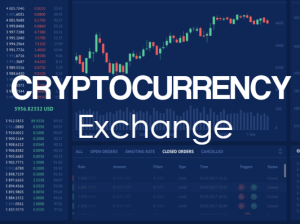Behind FTX Crash: What Leads to the FTX Collapse?
For all intents and purposes, FTX seemed to be the perfect cryptocurrency exchange. Sam Bankman-Fried, FTX’s founder and CEO, is a multibillionaire and a once-in-a-generation genius who has rubbed elbows with members of Congress and urged for “thoughtful regulatory leadership.” FTX and its sister companies were responsible for popularizing cryptocurrency.
They spent millions advertising during the Super Bowl, telling viewers not to “miss out” on “the next big thing” and promoting FTX as “a safe and easy way to get into crypto.” This came after Bankman-Fried was compared to JP Morgan during the crypto downturn this past year for the seemingly endless pile of cash he had to offer floundering crypto firms.
His whole empire collapsed in the space of a week.
What Happened to FTX?
Here are the most important details:
Sam Bankman-Fried, who served as CEO of FTX until last Friday, launched the company in 2019 as a cryptocurrency exchange. It has its own token, FTT, and as of Tuesday was the fourth largest cryptocurrency exchange by volume.
In addition to Bitcoin, Bankman-Fried established a cryptocurrency trading firm named Alameda Research; on November 2nd, CoinDesk reported on Alameda’s shaky financials. Its FTT assets are worth billions of dollars, according to the study, making them its primary holdings.
As a result of “recent findings that have come to light,” Binance CEO Changpeng Zhao announced on Twitter Sunday that the exchange would be liquidating its holdings of FTT in light of the CoinDesk investigation on FTX and Alameda’s muddled finances, which was published on November 2. He likened what was happening with FTX to the TerraUSD and LUNA crashes earlier this year, which had a devastating effect on the cryptocurrency industry and lost investors billions of dollars. However, such changes are rarely made public knowledge.
After Zhao made his remark, the value of FTT plummeted the next day on growing concerns that FTX had the resources to support its operations and remain operational. Bitcoin’s value hit a two-year low, and the value of other cryptocurrencies such as BTC and ETH followed suit. The platform had $5 billion in withdrawals on Sunday, according to a tweet from Bankman-Fried on Thursday.
Behind the FTX Crash
Bankman-Fried :Alameda Research
Bankman-quantitative Fried’s trading firm, Alameda Research, purportedly had a large amount of its assets denominated in tokens issued by FTX, according to a leaked balance sheet. It was common knowledge that FTX and Alameda were intertwined, but there was little proof of their degree of interdependence and authorities had taken no concrete steps to probe the connections.
Then FTX’s biggest rival, Binance, revealed it would be liquidating a considerable quantity of FTX tokens it had held onto since 2021, when Bankman-Fried repurchased Binance’s interest in FTX. As a result of Binance’s sell-off, public anxiety about FTX’s stability increased, leading to a precipitous decline in the token’s value and a “run on the bank” by consumers who had their money stored on the exchange. Binance initially flirted with the idea of bailing out Bankman-Fried after hearing their pleas for help, but the exchange ultimately reversed course after discovering “mishandled company cash” and other irregularities in its investigation. Bankman-Fried resigned and FTX declared bankruptcy on Friday.
The full scope of Bankman-“fuck-up” Fried’s is only now becoming apparent. His clients had little leverage, he said, but he underestimated it. On Thursday, Alexandra Scaggs of the Financial Times was charitable in her assessment, writing that such an assertion “stretches the borders of credible belief” coming from the head of a platform frequently used for leveraged trading.
The Wall Street Journal claims Bankman-Fried may have lent Alameda a large sum of money from FTX customers’ assets to finance the latter’s high-risk trading methods and to rescue the trading firm after those techniques nearly brought it down in the spring.
Playing Customer Funds
If you were looking for a cryptocurrency exchange that was excelling at everything they did, FTX would seem to be it. Managed by Sam Bankman-Fried, a multibillionaire widely regarded as a once-in-a-generation genius, who mingled with lawmakers and advocated for “thoughtful regulatory leadership,” FTX and its affiliates were instrumental in introducing crypto to the masses.
They spent millions advertising during the Super Bowl, telling viewers not to “miss out” on “the next big thing” and promoting FTX as “a safe and easy way to get into crypto.” Bankman-Fried was likened to JP Morgan during the crypto downturn this past year because of the seemingly endless pile of cash he had to offer floundering crypto firms.
His entire empire collapsed in a matter of days.
Risks of FTX Staking
Staking for cryptocurrencies is a service that Ftx provides. In spite of the passive income-generating potential of crypto staking, there are a few potential drawbacks that should be considered. Here are some of the most important ones:
There is a high degree of uncertainty surrounding the future value of cryptocurrencies, which can lead to sudden price drops. If your assets suffer a significant decline, the interest you earn might not be enough to compensate for the difference.
You can “unstake” your cryptocurrency gains, but it may take at least a week for some exchanges to process your request. On the other hand, platforms like Bybit provide variable staking and instantaneous withdrawals.
Understand that the best staking coins will be locked for a short time if you want to use them. This means that during this time period, the assets in question can be used for no other purpose.
What Exchanges were Influenced by the FTX Crash?
The excessive volatility and the inability of many FTX customers to withdraw funds have caused investors to worry about the security of their holdings on other exchanges. Here are the ways that major currency exchanges are impacted:
Withdrawals have been blocked and Chapter 11 bankruptcy has been filed for by FTX and FTX.US. Reuters reported that the SEC and the CFTC are investigating FTX for its treatment of client funds. This probe has been going on for a while now. In spite of NerdWallet’s request, FTX has provided no comment.
Withdrawals from BlockFi have been halted. The company said on Twitter that it had found out about the FTX news through the social media platform and that it would be unable to continue business as usual until more information became available. FTX.US had provided BlockFi with a $400 million line of credit prior to the cancellation of the planned acquisition.
After the “FTX implosion,” CEO Kris Marszalek of Crypto.com tweeted that the company’s direct exposure was “immaterial,” or less than $10 million. Without providing an explanation, the platform has temporarily disabled the ability to withdraw USD and USDT, two stablecoins that are widely used.
U.S. users should not worry about Binance’s business relations with FTX, according to a tweet from Binance.US, the company’s independently run division in the United States.
As tweeted by Coinbase CEO Brian Armstrong, the company faces no “substantial exposure” to FTX, FTT, or Alameda.
Cameron Winklevoss, co-founder of Gemini, tweeted that there is no “substantial exposure” to FTX, FTT, or Alameda on the platform.
As reported by NerdWallet, Robinhood has no direct exposure to Alameda, FTX, or any of its businesses. The platform does not allow FTT trading. Bankman-Fried, the founder of FTX, owns a 7.6 percent share of Robinhood.
EToro assured NerdWallet that there is no corporate risk associated with FTX or FTT on the platform. Except in the United States, EToro allows users to trade FTT.
Kraken has notified CoinDesk that it does not allow FTT trading and has no material exposure to FTX or Alameda. NerdWallet has reached out to TradeStation and Webull for comment, but neither company has yet responded.
What does this Mean for U.S. Users?
Reports state that FTX.US was included in the company’s Chapter 11 bankruptcy filing. The organizations’ stated goal is to “maximize recoveries for stakeholders,” as stated by the new CEO, Ray. However, as of the time of publication, there was no relevant guidance for concerned investors.
Many users said they had lost money from their wallets on Friday night after the suspected attack. FTX.US had earlier that day put a hold on customer withdrawals, but they are now back up and running normally.
The bankruptcy filing runs counter to everything Bankman-Fried has said up until this point. It was pointed out earlier in the week that the liquidity problems only affected FTX International and not FTX.US, the American component of the exchange, which is subject to stricter regulations. According to a tweet published by Bankman-Fried on Thursday, the FTX.US exchange is “100% liquid,” indicating that users have full access to all of their invested cash.
Here’s What FTX Users Should Do
1. In order to access your FTX account, please log in.
2. Get a read-only API key by going to your profile and selecting the “generate read-only API key” button.
3. It’s important to keep track of your cryptocurrency purchases, sales, and any resulting gains or losses, so be sure to download all relevant statements.
You should keep records of what you purchased, when you purchased it, and how much money you lost in the event that FTX confronts legal action and users become creditors claiming restitution of their monies.
4. Find a safe exchange like BTCC to invest.
Is BTCC Safe?
BTCC was founded in June 2011 with the goal of making crypto trading reliable and accessible to everyone.
We do not provide the crypto staking therefore you don’t need to worry about the crypto collapse like the FTX. BTCC also uses separate cold pockets to store user assets. Although there is no 100% secure storage method, cold pockets have been recognized as a relatively safe method.
BTCC offers exclusive bonus for new users. Sign up and deposit on BTCC to get up to 3,500 USDT in bonuses Now.










